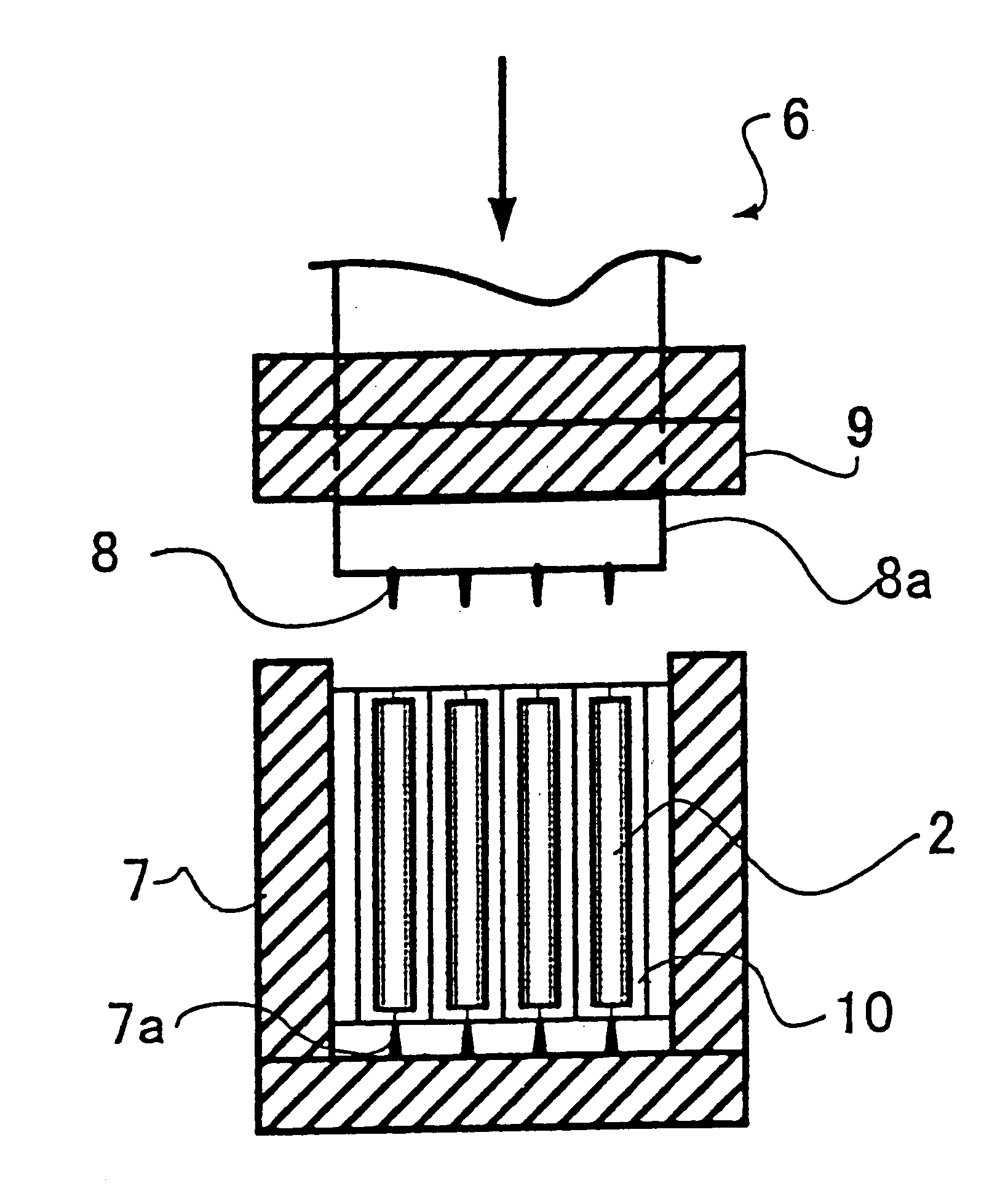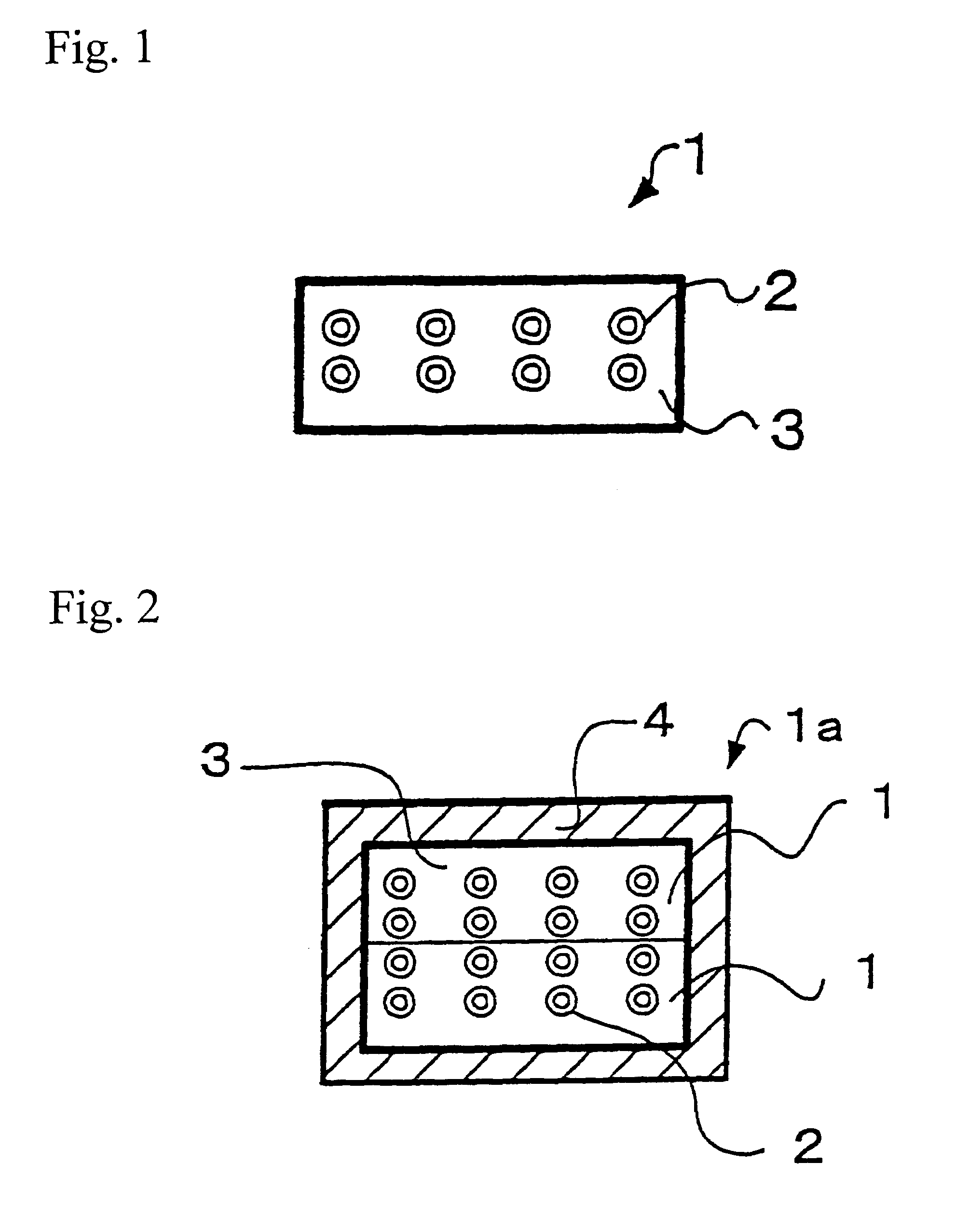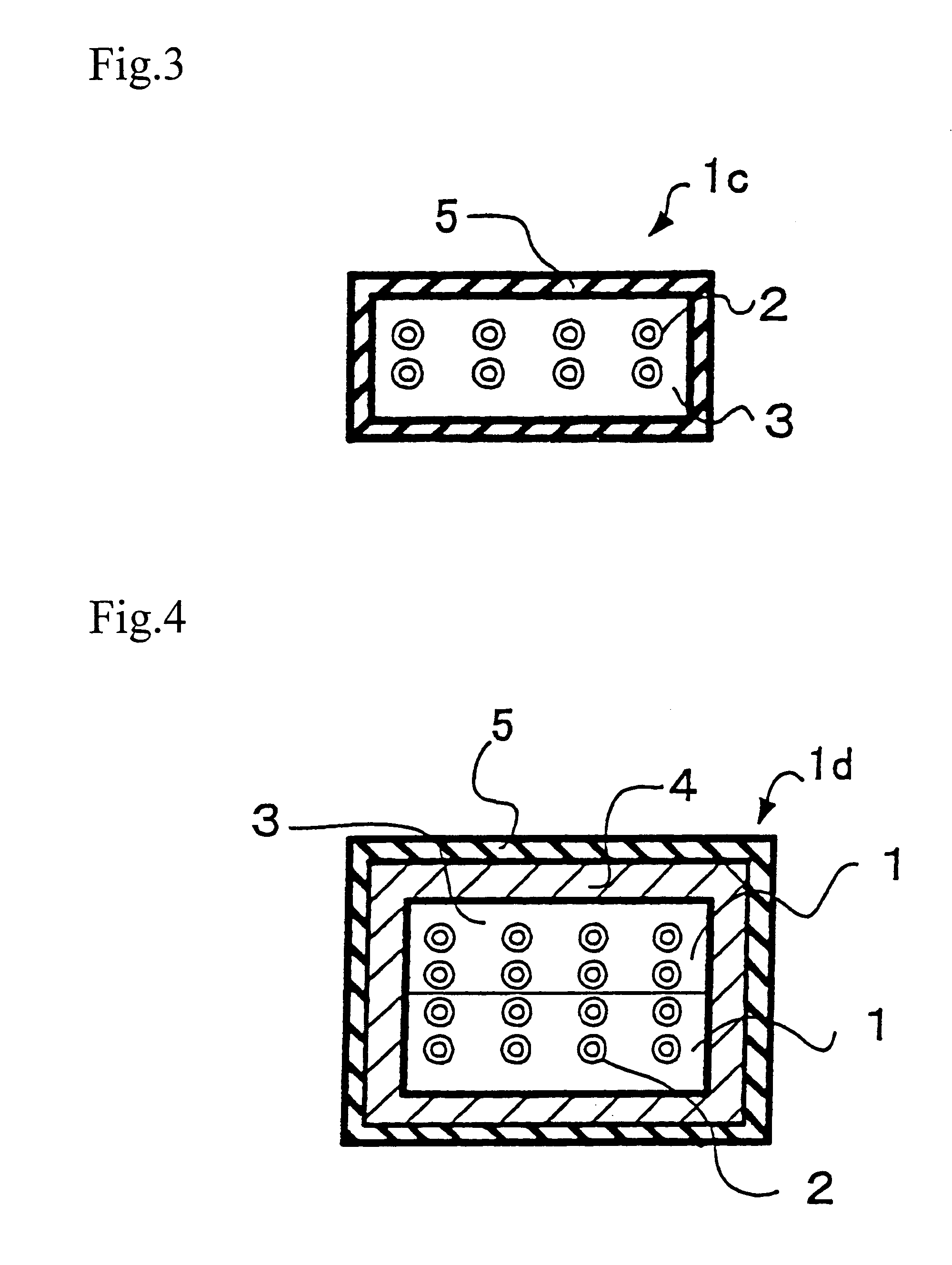Connector component for multi-core optical fiber, ferrule, and method for manufacturing the same
a multi-core, optical fiber technology, applied in the direction of optics, optical elements, instruments, etc., can solve the problems of difficult to increase productivity, difficult to use the above-mentioned optical connector in constructing a system, bad connections, etc., to improve the yield of metal ferrules for optical fibers as products, improve the wettability of the surface, and improve the mounting density of optical fibers
- Summary
- Abstract
- Description
- Claims
- Application Information
AI Technical Summary
Benefits of technology
Problems solved by technology
Method used
Image
Examples
example 1
[0150]The surface-roughening agent to be used in thermal-spraying (product name: Sabnor; produced by Arc Techno Co., Ltd.), which is composed of epoxy resins, solvents, and curing agents, was sprayed onto the ferrules, which were fixed onto the positioning member by the method described for the above embodiment, so as to roughen the surface of each ferrule. The ferrules, which were formed into a specified shape, were coated on their surfaces (except for the sides having ferrule holes) by flame-spraying polyphenylenesulfide-base thermoplastic resin [FORTRON®; produced by Polyplastics Co., Ltd.], and each ferrule was formed into a specified shape, so that 20 connectors (each of which has 1 stage of ferrules in it) for 8-core optical fibers were manufactured.
[0151]At this time, the nozzle temperature was set at 300° C.–330° C., and the temperature near the ferrules was maintained at 150° C.–200° C. Measuring the eccentricity error (i.e., the error / difference between one ferrule hole's ...
example 2
[0152]The surface-roughening agent for thermal-spraying (Sabnor; produced by Arc Techno Co., Ltd.), which is composed of epoxy resins, solvents, and curing agents, was sprayed onto the ferrules, which were fixed onto the positioning member by the method described for the above embodiment, so as to roughen the surface of each ferrule. The surfaces of the ferrules (except for the sides having ferrule holes), which were formed into a specified shape, were coated by arc-spraying zinc wire rods and aluminum wire rods [using the Arc Boy PC 120i low-temperature metal-spraying system; Arc Techno Co., Ltd.], and each ferrule was formed into a specified shape, so that 20 connectors (each of which has 2 stages of ferrules in it) for 8-core optical fibers were manufactured.
[0153]The temperature near the ferrules during thermal-spraying was maintained at 40° C.–50° C. Measuring the eccentricity error between the ferrule holes in the obtained connector for the 8-core optical fiber (after the conn...
example 3
[0154]The structures, which were obtained by cutting the connectors for optical fibers manufactured by the method of Example 2 into a specified shape and adjusting the positions of the ferrules' insertion holes and the wall surface, were piled up. They were then coated by flame-spraying IDEMITSU PPS onto their surfaces (except for the sides having ferrules holes), and each ferrule was formed into a specified shape, so that 10 connectors (each of which has 4 stages of ferrules in it) for 16-core optical fibers were manufactured.
[0155]At this time, the nozzle temperature was set at 300° C.–330° C., and the temperature near the ferrules was adjusted to 150° C.–200° C. Measuring the eccentricity error between the ferrule holes in the obtained connector for the 16-core optical fiber (after the connector was formed into a specified shape) revealed that the error range was ±0.05 μm–0.5 μm.
PUM
| Property | Measurement | Unit |
|---|---|---|
| Current | aaaaa | aaaaa |
| Shape | aaaaa | aaaaa |
Abstract
Description
Claims
Application Information
 Login to View More
Login to View More - R&D
- Intellectual Property
- Life Sciences
- Materials
- Tech Scout
- Unparalleled Data Quality
- Higher Quality Content
- 60% Fewer Hallucinations
Browse by: Latest US Patents, China's latest patents, Technical Efficacy Thesaurus, Application Domain, Technology Topic, Popular Technical Reports.
© 2025 PatSnap. All rights reserved.Legal|Privacy policy|Modern Slavery Act Transparency Statement|Sitemap|About US| Contact US: help@patsnap.com



